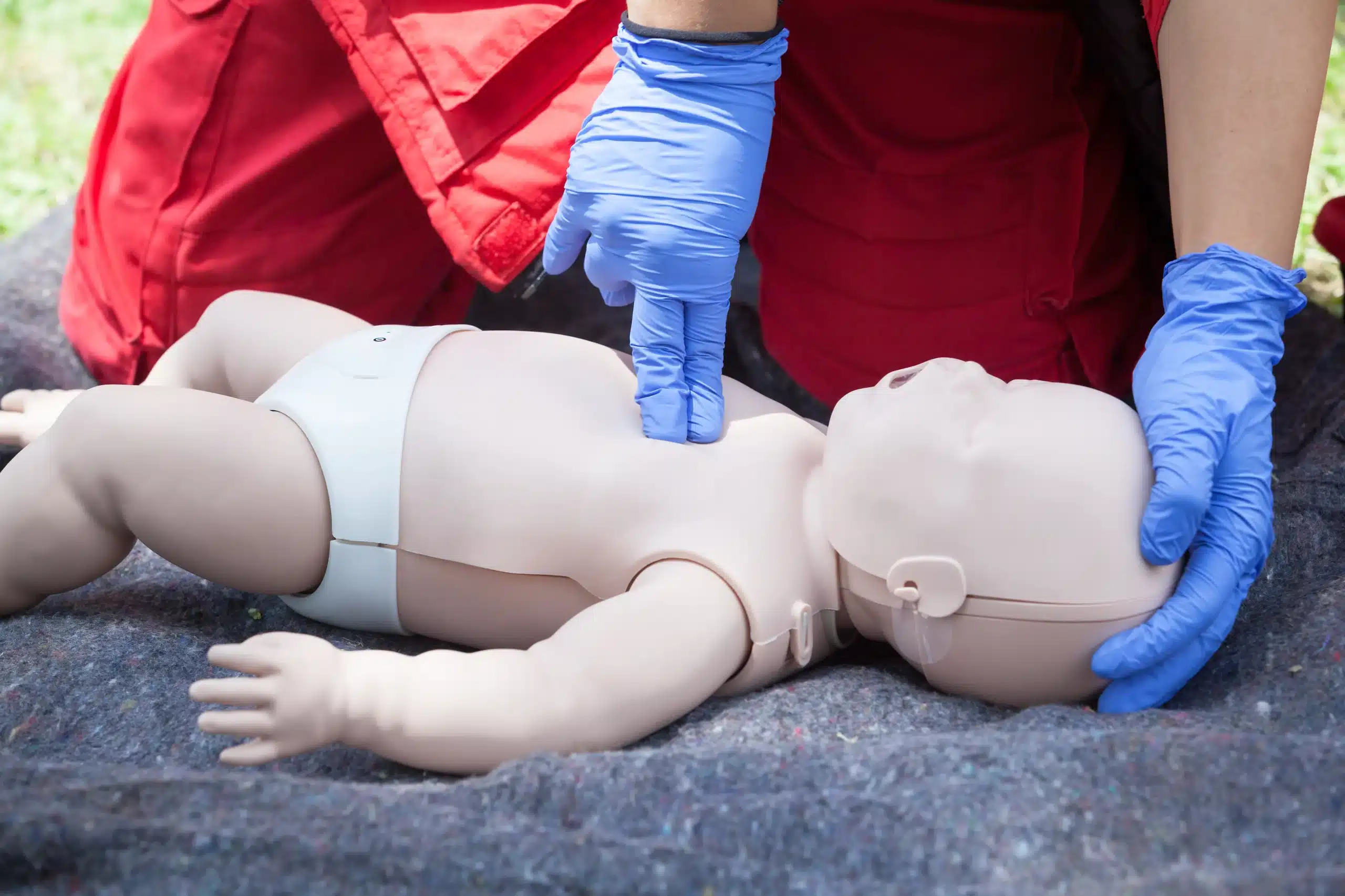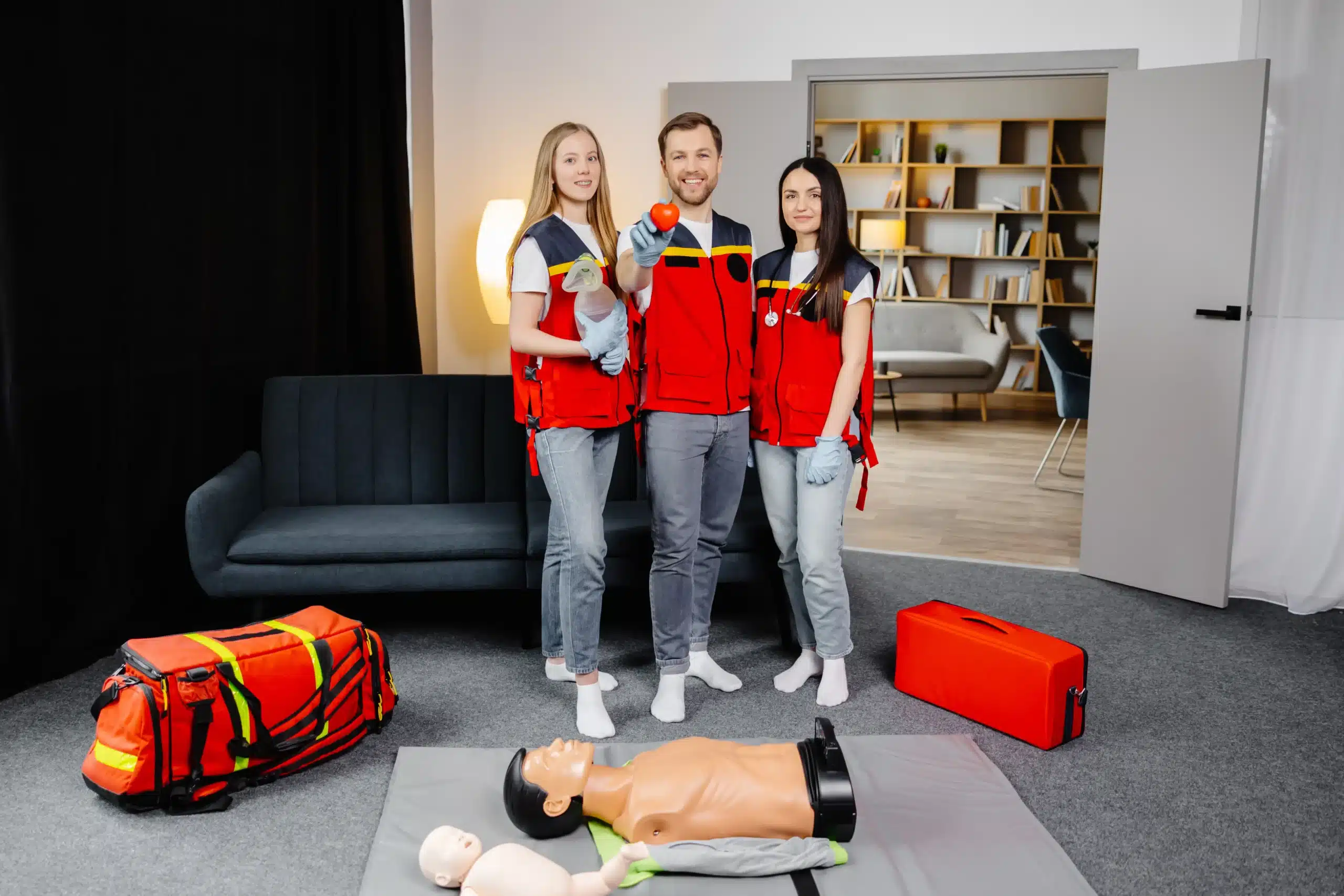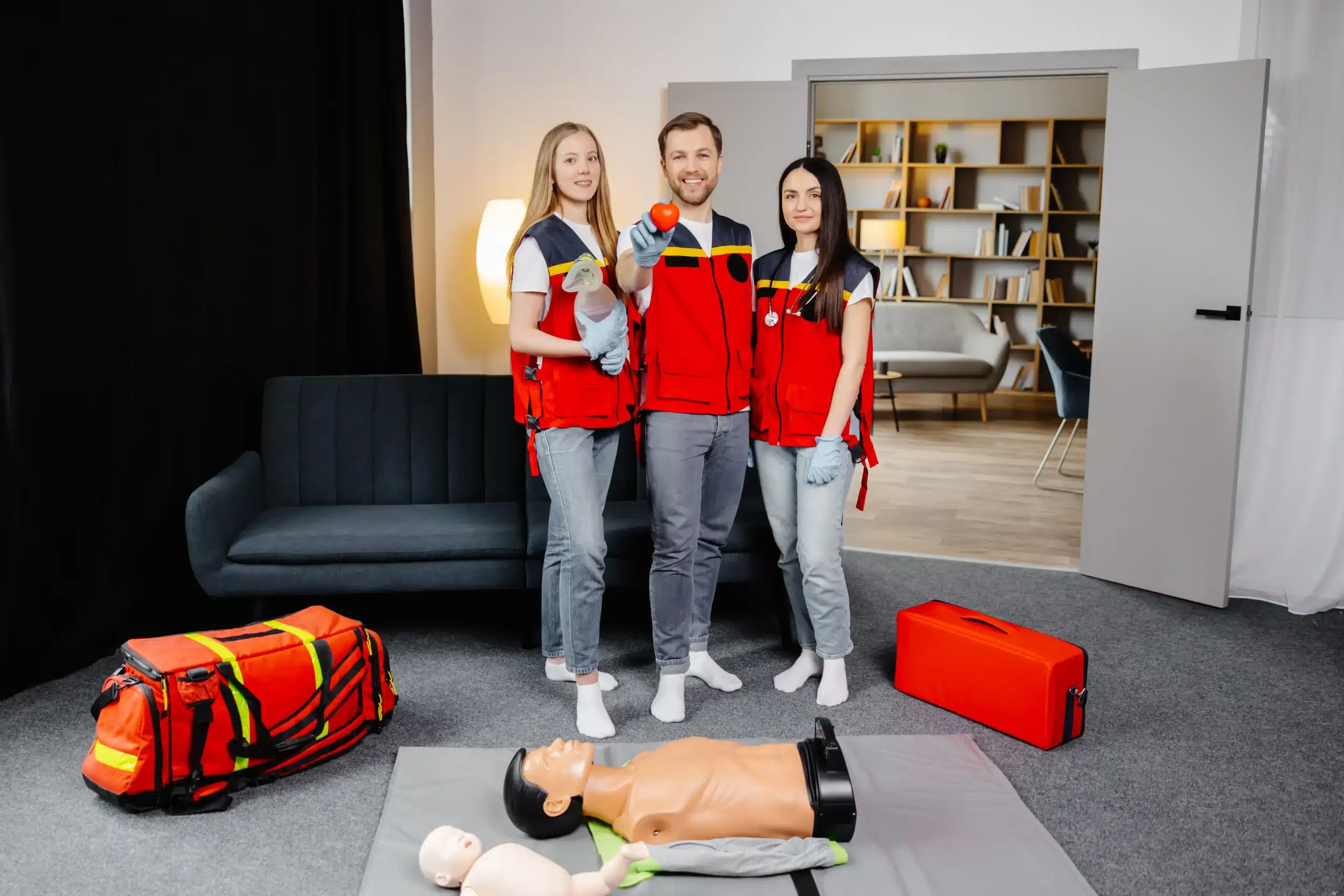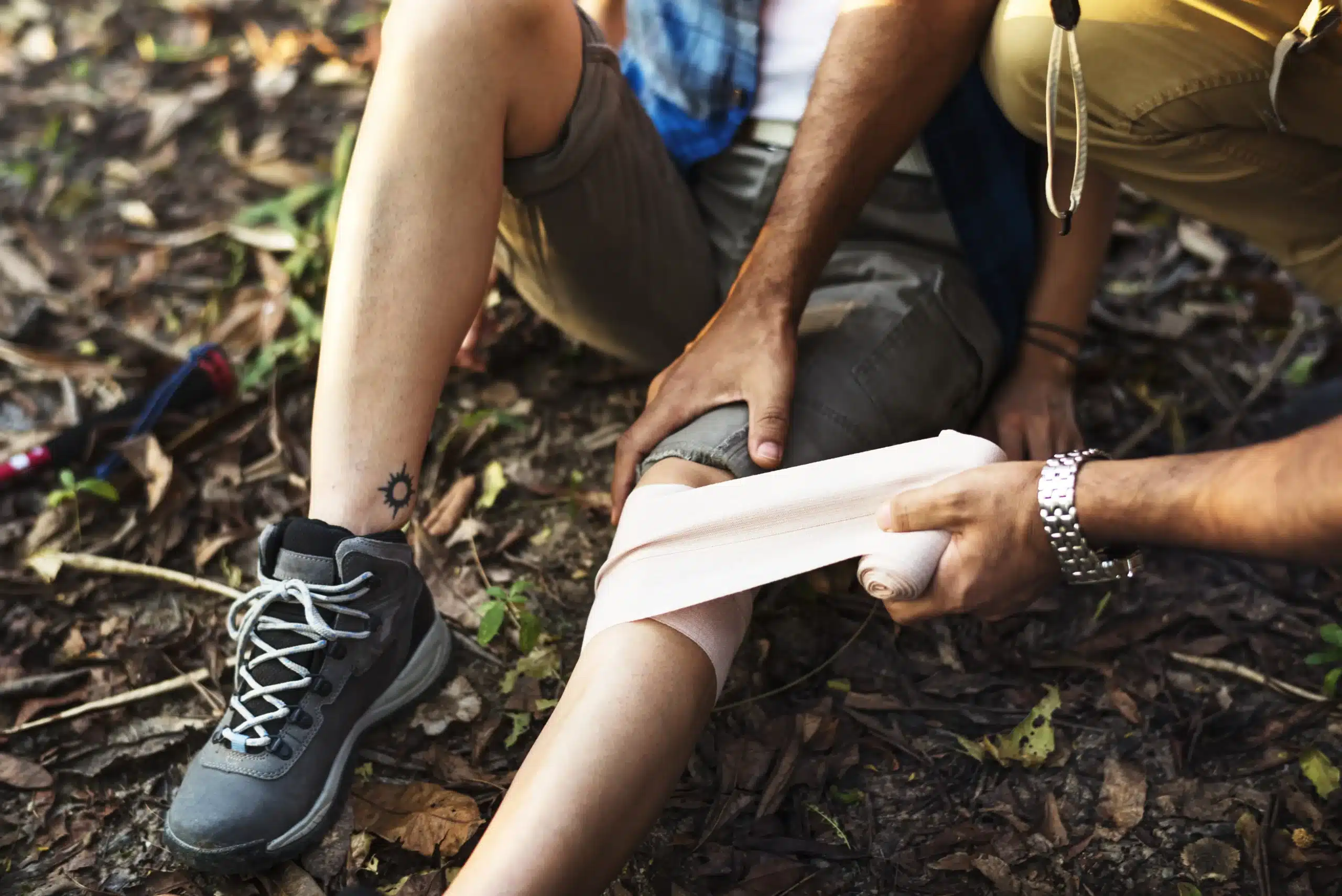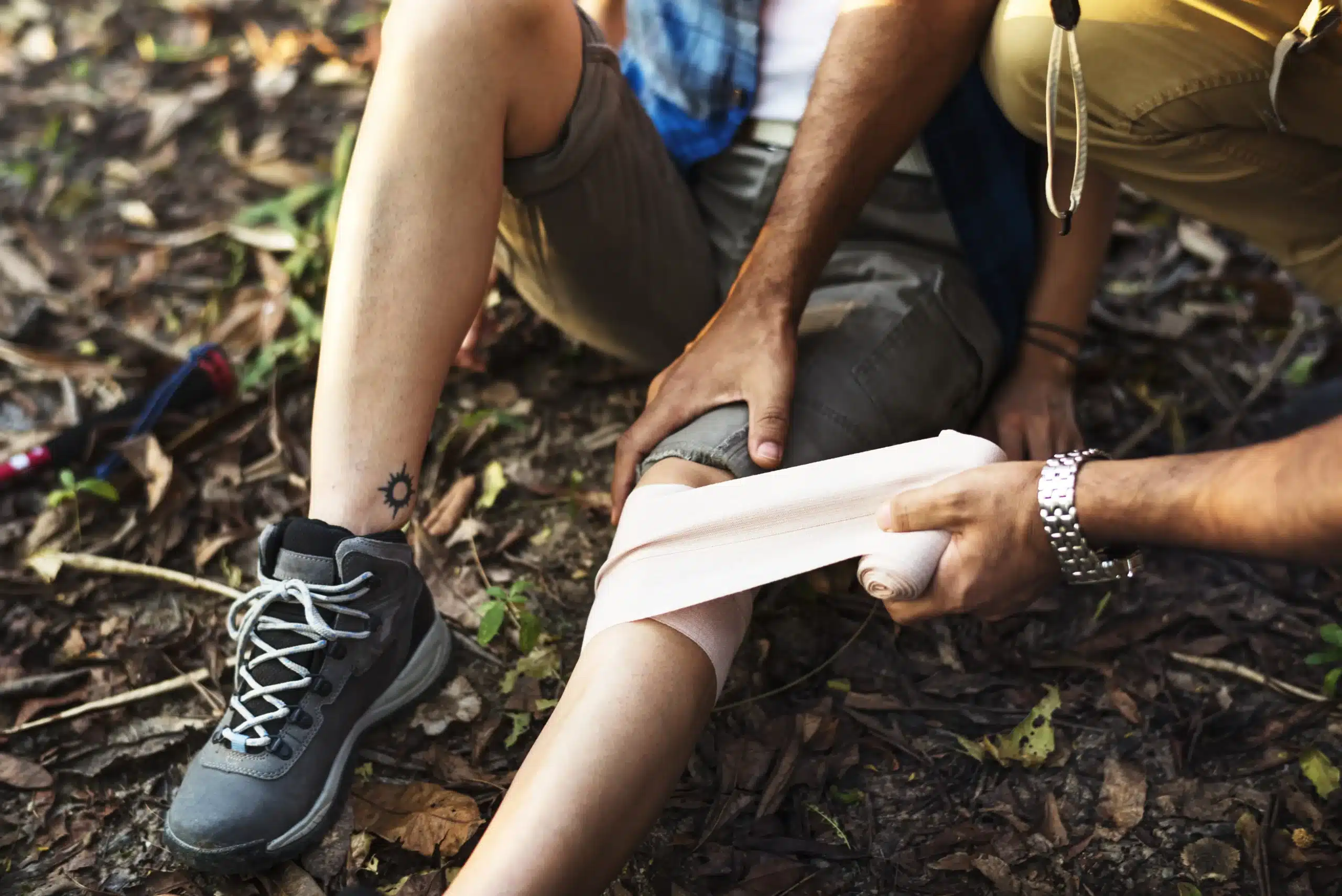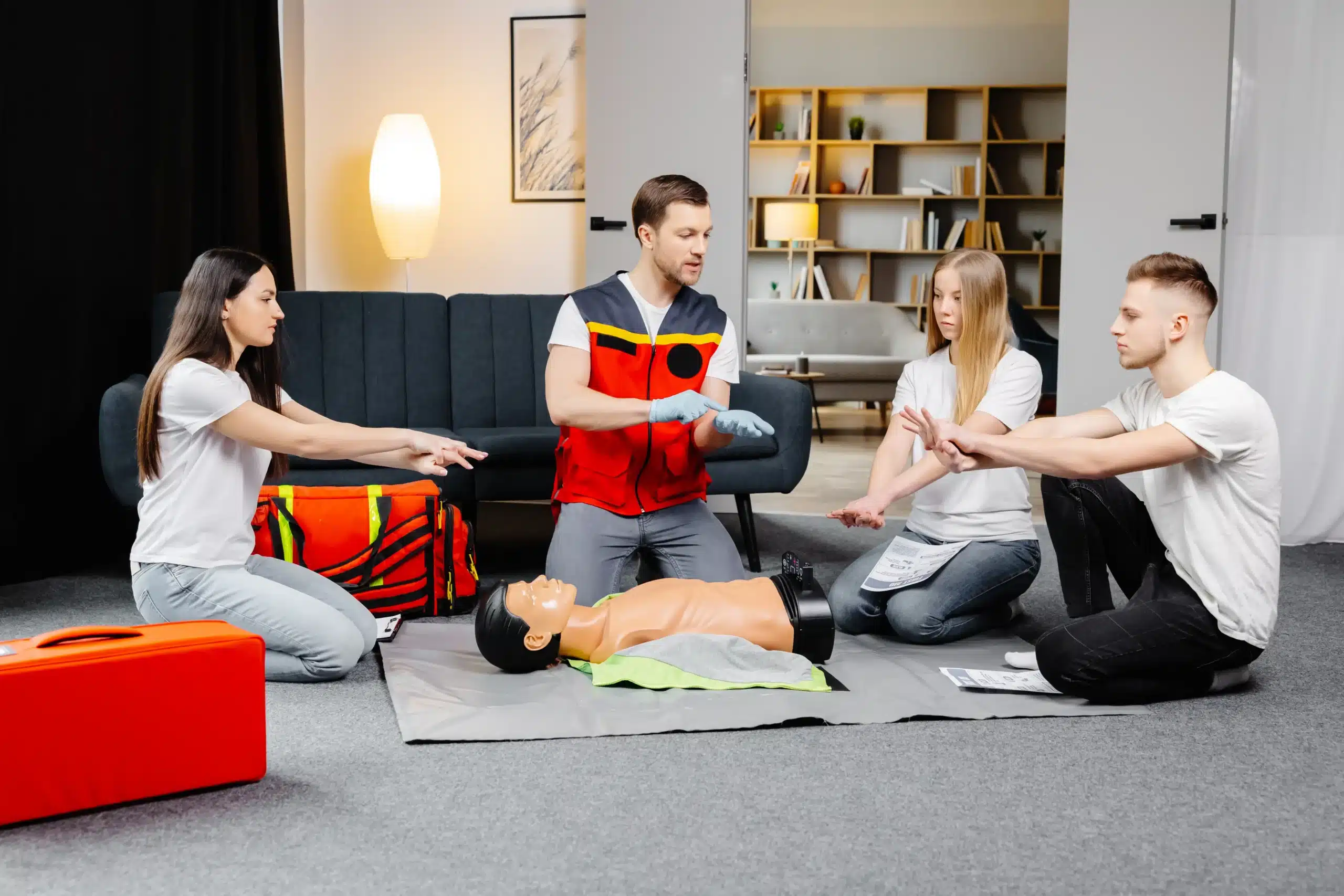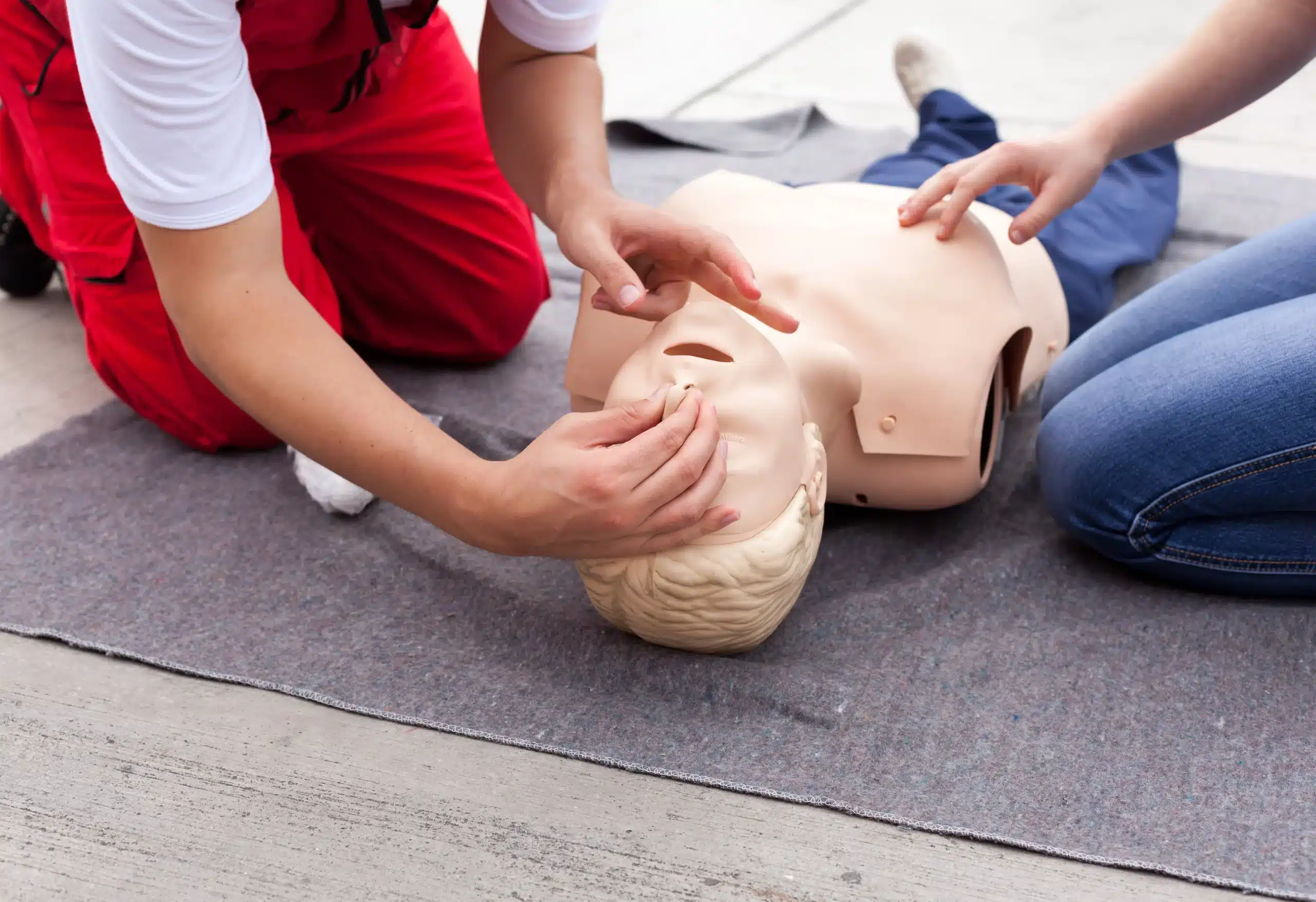In the face of a medical emergency, seconds can count. CPR and first-aid training in Vallejo equips you with the skills to respond quickly and effectively, potentially saving a life. This guide will navigate the various training options available in Vallejo, from basic CPR to advanced life support. We’ll discuss the importance of hands-on practice, address common anxieties about performing CPR, and provide resources for emotional support. We’ll also explore instructor qualifications and highlight some of the top training providers in the area. Whether you’re a healthcare provider, a parent, or simply a concerned citizen, this guide will help you find the right training to meet your needs.
Key Takeaways
- Find the right CPR and first-aid training for you: Whether you’re a healthcare provider, work with children, or simply want to be prepared, there’s a course that fits your needs. Explore options like BLS, ACLS, PALS, and specialized pediatric first aid.
- Consider practical aspects when choosing a course: Think about cost, schedule, and learning style. Look for providers offering group discounts, convenient locations, and flexible learning formats like online or blended learning.
- Gain confidence through hands-on learning: Reputable training programs provide ample opportunities to practice essential techniques and receive personalized feedback from certified instructors. This hands-on experience builds the confidence you need to act effectively in a real emergency.
What is CPR and First-Aid Training in Vallejo?
CPR and First-Aid training equips individuals with the skills to respond to medical emergencies. These courses cover essential techniques like CPR for adults, children, and infants, using an AED, and administering basic first aid. Vallejo residents can find a variety of training options, including the comprehensive Adult & Pediatric First Aid/CPR/AED course offered by the American Red Cross through the Greater Vallejo Recreation District.
Why Life-Saving Skills Matter
Learning CPR can make a profound difference in a life-or-death situation. CPR involves chest compressions and rescue breaths, techniques that can maintain vital functions until professional help arrives. These skills empower you to act quickly and confidently during emergencies.
The Need for Certified Individuals
Certification, often from organizations like the American Heart Association, validates your training and assures employers and healthcare facilities of your competence. This credential demonstrates that you’ve learned the most current protocols and techniques. Safety Training Seminars offers courses leading to this essential certification. Check out our American Heart Association BLS course for more information.
Addressing Your Concerns
Many people hesitate to pursue CPR training due to common concerns. Some worry about performing CPR incorrectly, while others feel intimidated by the physical demands or doubt their ability to handle a real emergency. These are valid concerns, and reputable training programs address them directly by providing ample opportunity for hands-on practice and building confidence through supportive instruction. Remember, any attempt at CPR is better than none. It’s also important to acknowledge the emotional impact of responding to emergencies. Support systems are crucial for processing these experiences.
Your Guide to CPR and First-Aid Courses
Knowing which CPR and first-aid course is right for you can feel overwhelming. This guide breaks down the different types of training offered in Vallejo, so you can choose the best fit.
Basic Life Support (BLS)
Basic Life Support (BLS) teaches you how to recognize and respond to life-threatening emergencies, including cardiac arrest and choking. The course covers essential techniques like CPR, using an AED (automated external defibrillator), and relieving airway obstructions. BLS certification is crucial for healthcare providers and other professionals who may need to respond to emergencies. It’s also a valuable skill for anyone who wants to be prepared. Knowing BLS can give you the confidence to act quickly and potentially save a life.
Advanced Cardiovascular Life Support (ACLS)
Advanced Cardiovascular Life Support (ACLS) builds upon the foundational skills learned in BLS. This advanced course is designed for healthcare professionals, such as doctors, nurses, and paramedics, who manage cardiac arrest and other cardiovascular emergencies. ACLS training emphasizes teamwork, effective communication, and advanced life-saving procedures.
Pediatric Advanced Life Support (PALS)
Pediatric Advanced Life Support (PALS) focuses on the specific needs of infants and children facing medical emergencies. This specialized training equips healthcare providers with the knowledge and skills to assess and manage critically ill pediatric patients. PALS covers a range of pediatric emergencies, from respiratory distress to cardiac arrest, and emphasizes rapid response and effective interventions.
First Aid Training
First aid training provides you with essential skills to manage various injuries and illnesses, from minor cuts and burns to more serious situations like fractures and allergic reactions. Learning first aid empowers you to provide immediate care until professional medical help arrives, potentially making a significant difference in an emergency’s outcome.
Specialized Courses (EMSA Pediatric CPR & First Aid)
Beyond the core CPR and first-aid courses, specialized training like the EMSA Child Care Health & Safety program caters to specific needs. This course is ideal for childcare providers, educators, and anyone working with children. It covers pediatric CPR and first aid, along with preventive health and safety practices to create a safe environment. Many providers offer group discounts, making it a cost-effective way to train an entire team.
Course Details and Enrollment
Finding the right CPR and first-aid course in Vallejo often comes down to practical details. Let’s break down the key factors to consider as you explore your options.
Costs and Affordable Options
We understand that cost is a major factor when choosing a course. While Safety Training Seminars is committed to offering the lowest prices in Napa County, it’s always wise to compare. Check each course page on our website for specific costs for BLS, ACLS, PALS, and other courses. Contact us directly if you have questions about pricing or payment options.
Group Discounts and Corporate Training
Need training for your team? We offer group discounts and can even bring customized training to your workplace. This saves you time and money and ensures your team learns together in a familiar environment. We’re flexible with scheduling to minimize disruption to your workday. Reach out to discuss your corporate training needs.
Register for a Course
Registering for a course should be straightforward. You can typically register directly through the training provider’s website. For some community courses, you might register through the organization hosting the class. For example, for updates on courses offered through the Greater Vallejo Recreation District, contact them directly.
Course Duration and Structure
Course duration and structure vary depending on the certification. Basic CPR and first-aid courses are generally shorter than advanced certifications like ACLS and PALS. Our courses are designed to be efficient and comprehensive, providing you with the essential skills and knowledge you need. Whether you’re a healthcare worker, teacher, coach, or simply someone wanting to be prepared for emergencies, we have a course that fits your needs. Check out our individual course pages for more details on course structure.
Online and Blended Learning
Many courses now offer online or blended learning options. For example, our RQI program allows students to complete the online portion at their own pace before attending an in-person skills evaluation session. This blended approach offers flexibility and can be particularly helpful for busy professionals. The online portion typically takes one to two hours for BLS and three to four hours for ACLS or PALS. You can find more information about our RQI classes on our website.
What Happens During Training?
Want to know what to expect in your CPR and First Aid class? We’ll walk you through a typical training experience, from hands-on practice to receiving your certification.
Hands-on Practice
CPR and First Aid training isn’t just about lectures. You’ll learn by doing. Expect a mix of classroom instruction and hands-on practice, working with mannequins to practice chest compressions, rescue breaths, and other essential techniques. This hands-on learning ensures you can confidently apply your skills in a real emergency. Instructors demonstrate techniques and provide personalized feedback, helping you master the skills.
Skills Assessment and Certification
Your training culminates in a skills assessment, where you demonstrate your proficiency to a certified instructor. This practical test ensures you’ve grasped the core techniques of CPR and First Aid. Once you successfully complete the assessment, you’ll receive a two-year certification, validating your skills and knowledge.
Same-Day Certification
Many training centers offer same-day certification. This means you’ll receive your certification card immediately after successfully completing the skills test. Bay Area CPR is one example of a provider offering this convenient option. No waiting around—you leave the class ready to put your new skills to use.
Physical Demands and Accommodations
CPR training involves physical activity, including kneeling and performing chest compressions. While most people can participate, it’s important to be aware of the physical requirements. Check with your chosen training provider about the physical demands and any accommodations they offer. If you have any physical limitations or pre-existing conditions, discuss your needs; your comfort and safety are paramount.
Instructor Qualifications and Standards
When your health is on the line, you want to know the person providing CPR training has the right skills and experience. Here’s what to look for in a qualified CPR instructor:
Certifications and Experience
A qualified CPR instructor should hold certifications from a nationally recognized organization, such as the American Heart Association (AHA). These certifications demonstrate a commitment to meeting established standards for CPR instruction. Look for instructors who not only hold these certifications, such as BLS certification, but also maintain them through continuing education. This ensures they stay up-to-date on the latest life-saving techniques and guidelines. Our instructors at Safety Training Seminars maintain their AHA certifications and bring years of experience to the classroom. We also offer ACLS and PALS courses for healthcare providers seeking advanced certifications.
Real-Life Emergency Experience
While certifications are essential, real-world experience adds another layer of valuable insight. Instructors who have faced actual emergencies often bring a practical understanding that goes beyond textbook knowledge. They can offer unique perspectives, answer your questions with real-life examples, and provide a more comprehensive learning experience.
Ongoing Education
The medical field is constantly evolving, and CPR techniques are no exception. A commitment to ongoing education is crucial for any CPR instructor. Look for training centers and instructors who prioritize staying current with the latest research, guidelines, and best practices. This dedication ensures you receive the most accurate and effective training. This might include attending workshops, participating in online training, or pursuing advanced certifications. At Safety Training Seminars, we believe in empowering our students with the most current and effective life-saving skills. We encourage you to explore our specialized courses like the EMSA Child Care Health & Safety program. We also offer RQI classes to help healthcare professionals maintain their resuscitation skills.
Top CPR and First-Aid Training Providers in Vallejo
Finding the right CPR and First-Aid training provider is crucial for receiving quality instruction and a recognized certification. Here are some prominent options in and around Vallejo:
Safety Training Seminars
Safety Training Seminars offers a range of life-saving courses, including American Heart Association (AHA) BLS, ACLS, PALS, and CPR/First-Aid training right here in Vallejo. They prioritize comprehensive training and flexible scheduling. Visit their website for current course schedules and pricing. You can explore their BLS certification, ACLS course, and PALS certification options. They also provide EMSA Child Care Health & Safety training and RQI classes.
American Red Cross
The American Red Cross is a renowned provider of CPR and First-Aid training. Their Adult and Pediatric First Aid/CPR/AED course covers essential life-saving techniques. This course is available through various locations, including the Greater Vallejo Recreation District. Check the Red Cross website or contact your local chapter for course availability and registration details.
CPR Training Center
Located in nearby Concord, the CPR Training Center serves Vallejo and the surrounding areas. They offer AHA-certified CPR, ACLS, PALS, and BLS courses designed for both healthcare professionals and the general public.
St. Helena Hospital
St. Helena Hospital may offer health-related courses and certifications, possibly including CPR and First-Aid training. Contact the hospital directly to inquire about specific programs they offer and their availability.
Solano Community College
Solano Community College is another potential resource for CPR and First-Aid training in the area. Visit their website or contact their continuing education department for details on available courses.
Touro University California
Touro University California may also offer CPR and First-Aid training programs. Contact the university directly to learn about specific courses and whether they meet your requirements.
Greater Vallejo Recreation District
Partnering with the American Red Cross, the Greater Vallejo Recreation District offers Adult and Pediatric First Aid/CPR/AED training. This partnership provides convenient local access to Red Cross-certified courses.
Golden State Health and Safety Solutions
Golden State Health and Safety Solutions offers CPR and First Aid classes in Vallejo, taught by certified instructors with real-world emergency experience. They focus on practical skills and real-world application. Visit their website for course information and schedules.
Related Articles
- CPR Classes in Vallejo: Your Complete Guide – Napa CPR Classes
- American Heart Association (AHA) Courses in Vallejo CA
- BLS Training in Vallejo: Your Go-To Guide – Napa CPR Classes
- ACLS Courses in Vallejo: Your Complete Guide – Napa CPR Classes
- PALS Classes in Napa, CA – Napa CPR Classes
Frequently Asked Questions
What’s the difference between BLS, ACLS, and PALS?
BLS (Basic Life Support) teaches fundamental life-saving techniques like CPR and using an AED. It’s suitable for anyone, including healthcare providers and the general public. ACLS (Advanced Cardiovascular Life Support) builds upon BLS and is designed for healthcare professionals managing complex cardiovascular emergencies. PALS (Pediatric Advanced Life Support) focuses on the specialized care of infants and children in medical crises.
How do I choose the right CPR and First-Aid course for me?
Consider your current skills, professional requirements, and personal goals. If you’re new to life-saving techniques, a basic CPR and First-Aid course is a great starting point. Healthcare providers often require BLS, ACLS, or PALS certification. If you work with children, specialized pediatric training is essential. Look at course descriptions and contact training providers to discuss your specific needs.
What can I expect during a CPR and First-Aid training class?
Expect a blend of interactive classroom learning and hands-on practice. You’ll learn the theoretical principles behind CPR and First-Aid and practice techniques on mannequins. Instructors will guide you through scenarios and provide feedback to build your confidence. Most courses conclude with a skills assessment to ensure you’ve mastered the techniques.
How much does CPR and First-Aid training cost, and are there any discounts available?
Costs vary depending on the course type, location, and training provider. Many providers offer group discounts for businesses or organizations training multiple employees. Some also offer discounts for students, seniors, or community groups. Contact training providers directly to inquire about specific pricing and available discounts.
How do I find CPR and First-Aid training courses near me?
Several resources can help you locate training courses in your area. Check with local hospitals, community colleges, and recreation centers. National organizations like the American Red Cross and the American Heart Association often list certified training centers on their websites. You can also search online for “CPR training near me” to find local providers.
